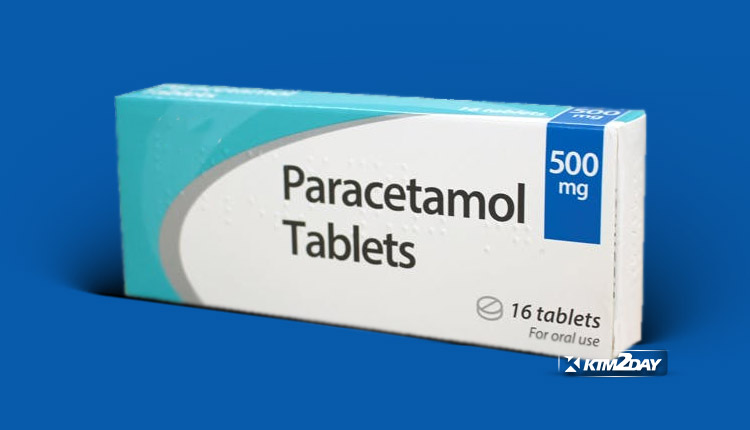Unraveling the Mystery: How Paracetamol Delivers Pain Relief and Fever Reduction


Paracetamol, also widely known as acetaminophen in many parts of the world, is arguably one of the most common over-the-counter medications globally. Millions reach for it daily to combat headaches, muscle aches, and fevers. Despite being a household staple for over a century, the precise mechanism by which paracetamol works remains one of medicine’s most enduring scientific puzzles. This paradox – its common use alongside its complex, still-debated action – sets it apart from more clearly understood pain relievers like NSAIDs.
What Makes Paracetamol Unique?
At its core, paracetamol is classified primarily as an analgesic (pain reliever) and an antipyretic (fever reducer). Unlike NSAIDs such as ibuprofen, naproxen, or aspirin, paracetamol exhibits very little to no anti-inflammatory activity in the human body at standard therapeutic doses.
This crucial pharmacological difference is fundamental to understanding its unique effectiveness and why its side effect profile is markedly milder on the stomach.
Unlike NSAIDs, which can irritate the gastrointestinal lining and cause issues like ulcers or bleeding due to their systemic inhibition of protective prostaglandins, paracetamol largely bypasses these effects.
Consequently, it is often the preferred choice for individuals with gastric sensitivity or those who cannot tolerate NSAIDs due to pre-existing conditions.
The Central Mystery : Paracetamol’s Action in the Brain
While NSAIDs work by broadly inhibiting cyclooxygenase (COX) enzymes (specifically COX-1 and COX-2 isoforms) throughout the entire body, thereby reducing the systemic production of pain and inflammation-causing prostaglandins, paracetamol’s action is far more selective, nuanced, and intricately localized.
Scientists now largely agree that paracetamol primarily acts within the central nervous system (CNS)—meaning the brain and spinal cord, rather than widely in peripheral tissues.
This brain-focused approach is precisely what allows it to effectively reduce pain perception and lower fever without significantly affecting inflammatory processes at the site of injury or causing the characteristic gastrointestinal irritation and anti-platelet effects often associated with systemic COX inhibition by NSAIDs.
The exact pathways through which paracetamol achieves its therapeutic effects are complex and thought to involve several interacting mechanisms, reflecting its subtle yet powerful influence on pain and temperature regulation:
Selective Prostaglandin Inhibition (in the CNS):
One of the most prominent and consistent theories suggests that paracetamol selectively inhibits prostaglandin synthesis, but predominantly within the brain and spinal cord, rather than in peripheral tissues where inflammation occurs. Prostaglandins in the brain play a crucial role in both facilitating pain signals and regulating core body temperature. By reducing their localized production in the CNS, paracetamol can effectively dull pain perception and lower fever. While initially hypothesized that paracetamol might target a specific “COX-3” enzyme predominantly active in the brain, the conclusive existence and significant physiological role of a human COX-3 are now largely discredited. Nevertheless, the underlying principle of paracetamol’s selective central action—its ability to inhibit prostaglandin synthesis where it matters most for pain and fever control without widespread peripheral anti-inflammatory effects—remains a cornerstone of understanding its mechanism.
Interaction with the Endocannabinoid System:
Another intriguing and increasingly supported hypothesis points to paracetamol’s potential indirect interaction with the endocannabinoid system. This is a complex endogenous signaling network composed of neurotransmitters (endocannabinoids) and their receptors distributed throughout the body, playing a crucial role in regulating a vast array of physiological processes, including pain, mood, appetite, and immune function. It’s theorized that paracetamol may indirectly enhance the effects of naturally occurring endocannabinoids, such as anandamide. Anandamide is known for its pain-relieving and mood-modulating properties. By potentially inhibiting the reuptake or breakdown of anandamide, paracetamol could extend its presence and activity, thereby contributing to its analgesic effects by tapping into the body’s own natural pain-control mechanisms. This is a distinct pathway compared to simply blocking inflammatory chemicals.
Modulation of Serotonergic Pathways:
Some research also suggests that paracetamol influences serotonergic pathways in the brain and spinal cord. Serotonin, a well-known neurotransmitter, plays a vital and complex role in modulating pain signals that travel from the body to the brain and within the brain itself. Descending serotonergic pathways, which originate in the brainstem and project down to the spinal cord, are crucial for inhibiting pain transmission at the spinal level. By interacting with these intricate pathways, paracetamol might alter how pain signals are processed, perceived, and even inhibited, leading to an overall reduction in the sensation of discomfort. This influence on the brain’s internal pain control mechanisms provides a further layer of explanation for its analgesic capabilities.
Bringing Down the Heat : The Antipyretic Action
Paracetamol’s fever-reducing capabilities, its antipyretic action, are comparatively well-understood. When the body fights an infection or responds to certain inflammatory stimuli, immune cells release signaling molecules called pyrogens (e.g., interleukins, prostaglandins). These pyrogens travel to the hypothalamus, a crucial region deep within the brain that functions as the body’s central thermostat. In response to these pyrogens, the hypothalamus “resets” the body’s normal temperature set-point to a higher level, triggering physiological responses like shivering and vasoconstriction (narrowing of blood vessels) to generate and conserve heat, resulting in a fever. Paracetamol is believed to act directly on the hypothalamus to inhibit the production of specific prostaglandins (primarily prostaglandin E2) that mediate this upward shift in the temperature set-point. By effectively “resetting” the thermostat back to its normal, lower temperature, paracetamol prompts the body to actively cool down through natural heat dissipation mechanisms, such as increased sweating (evaporation of sweat cools the skin) and peripheral vasodilation (widening of blood vessels near the skin’s surface to release heat).
Quieting the Signals: The Analgesic Action
For pain relief, paracetamol’s central nervous system action is paramount and explains its broad utility. Crucially, it doesn’t primarily reduce inflammation at the site of injury or disease, which is why it’s generally not the first-line choice for deeply inflammatory conditions like severe arthritis or acute injuries with pronounced swelling. Instead, its primary mode of action is to interfere with the ascending pain signals traveling up the spinal cord to the brain, effectively “dulling” the overall perception of pain at a central level. It may also enhance the brain’s own descending pain inhibitory pathways, reinforcing the body’s natural ability to suppress pain signals. This makes it a highly effective and well-tolerated option for a wide range of mild to moderate non-inflammatory pains, including tension headaches, mild migraines, general muscle aches and stiffness, the discomfort associated with common colds and flu, mild sprains, and routine menstrual cramps. Its action is distinct from NSAIDs, which target inflammation directly.
Safety and Usage: A Crucial Distinction
One of the most important and frequently emphasized aspects of paracetamol is its favorable safety profile when used strictly at recommended therapeutic doses. It is generally well-tolerated by most individuals and causes significantly fewer gastrointestinal side effects (like irritation, heartburn, or ulcers) compared to NSAIDs, making it a particularly suitable option for individuals with sensitive stomachs, pre-existing gastrointestinal conditions, or those who are on long-term NSAID therapy for other conditions.
However, despite its widespread availability and perceived safety, its safety margin is strictly dose-dependent and relatively narrow compared to some other medications. A critical and widely disseminated warning associated with paracetamol is the severe risk of acute liver damage (hepatotoxicity) if taken in overdose or if the recommended maximum daily limit is exceeded. This grave risk stems from the liver’s metabolic process: a small, normally insignificant portion of paracetamol is metabolized into a highly reactive and toxic compound called N-acetyl-p-benzoquinone imine (NAPQI). Under normal circumstances and at therapeutic doses, the liver’s natural antioxidant, glutathione, rapidly and effectively neutralizes NAPQI, rendering it harmless and allowing it to be excreted. But in an overdose situation—whether from a single large dose or cumulative excessive daily intake—the liver’s glutathione stores become rapidly depleted. This depletion allows the toxic NAPQI to accumulate unchecked, binding to and causing irreversible damage to liver cells, which can lead to acute liver failure and potentially be fatal if not treated promptly.
To mitigate this serious risk, adherence to proper dosage is not merely a recommendation but a critical imperative. Users MUST rigorously:
- Always adhere strictly to the recommended dosage instructions printed on the medicine packet or as advised by a healthcare professional. Never take more than the maximum recommended dose in a 24-hour period.
- Always check labels of ALL medications for paracetamol to prevent accidental overdose.
In conclusion, paracetamol remains an indispensable cornerstone of self-medication and a vital tool in medical practice globally, a testament to its consistent effectiveness in relieving common pain and fever. Despite its widespread use, paracetamol’s nuanced action within the central nervous system underscores its unique place in pain management, continuing to stand as a testament to both pharmaceutical effectiveness and scientific enigma.















